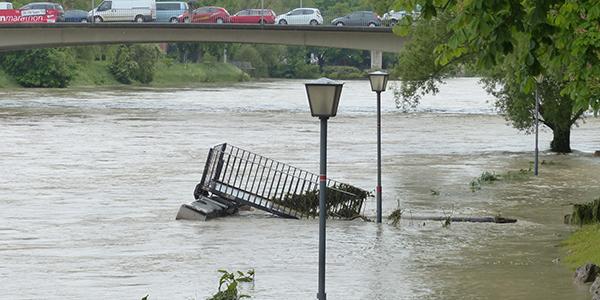Tolling Points
Bay Area Tolls Help Officials Counter Congestion, Prepare for Sea Level Rise

It’s one thing for county transportation officials to look to tolling as a way to fund needed infrastructure to relieve epic highway congestion.
It’s something else again when user financing becomes a key tool in the toolbox to counter sea level rise brought on by climate change. But it makes sense, particularly in a coastal state like California.
The prime directive for planners in Marin, Sonoma, Napa and Solano counties is still to streamline traffic movement and shave more than an hour off the commute along Highway 37 for the 45,000 vehicles that make the trip each day. But lately, there’s been something even bigger going on.
Last month, the North Bay Business Journal reported, “They (local officials) have also acknowledged that traffic improvements will be irrelevant without addressing sea level rise. Without action, the highway will be underwater in 30 years.”
Chronic Flooding by 2035
Not too many years ago, the maps showing severe sea level rise affecting U.S. coastal cities all carried effectives dates of 2070, 2080, or 2100. But last year, Scientific American reported that areas around San Francisco and Los Angeles can expect chronic flooding by 2035—and communities like Miami already see routine inundations at high tide.
While the research on which the SciAmerican report was based focused on homes at risk, the infrastructure that connects those homes is receiving more and more attention as communities come to grips of how they will adapt to a changing climate. It will be an expensive, utterly essential job. So it’s exactly right that planners in California want to deploy every funding and financing tool available to get the job done.
The region has come up with a long-term plan and a new partnership that brings together the four county transportation agencies, Caltrans, and the Bay Area Toll Authority that will start out with some “first fixes” over the next seven years. Over time, the partnership will bring “vast changes” to the highway, the Business Journal states.
Toll Revenue Makes the Difference
The regional partnership, dubbed Resilient State Road 37, began by defining and prioritizing three distinct project segments. The Business Journal says work will begin on a narrow, two-lane stretch from Sears Point to Mare Island that checks all the boxes—it’s congested, and it’s susceptible to sea level rise. “Fixes are already in the works to temporarily relieve traffic, although officials say the final solution, which could drastically alter the route’s alignment, is still decades away and could cost several billion dollars.”
Which is why it will be so important for the communities to draw on an initial $100 million in expected new revenue from Bay Area bridge tolling to help cover design costs for the long-term plan. Those early projects include a $30-million roundabout to replace a traffic signal near Sonoma Raceway, as well as a flexible third lane to ease peak-hour congestion.
But that’s just the start. “The ultimate solution, which accounts for sea level rise, includes some radical concepts and is not planned to start until at least 2040,” the Business Journal explains. “Plans range from raising the existing roadway onto a combination of embankments and causeways to drastically shifting the route inland so that it parallels an existing rail line. The most revolutionary design would build a straight bridge over San Pablo Bay directly from Novato to Vallejo, bypassing the shoreline entirely.”
The price range for those long-term fixes: $2.4 to $3.3 billion, including transit links, train access, bike and pedestrian paths, and wetland improvements.
To get from here to there, the counties will have to counter a lawsuit filed by the Howard Jarvis Taxpayers Association, “which claims the bridge toll measure voters approved last year was really a tax and needed two-thirds of the vote,” the Business Journal reports. “Officials are still collecting the increased bridge tolls and hope to be able to use the funds if they are successful in court.”




0 Comments